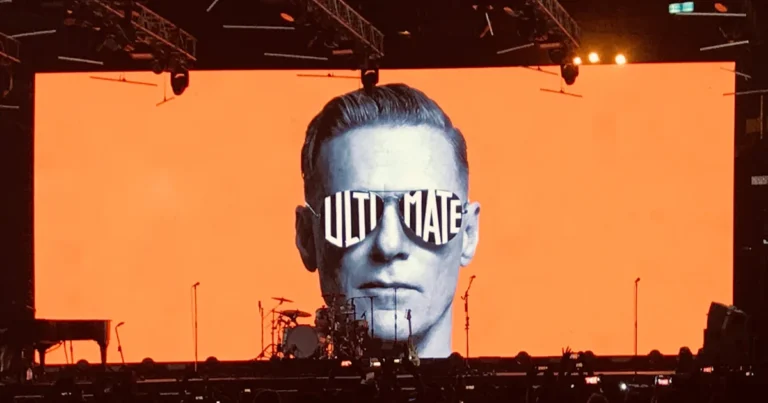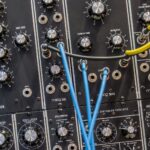Support our educational content for free when you purchase through links on our site. Learn more
Kraftwerk The Model: 7 Fascinating Facts & Covers You Must Know 🎹

Have you ever wondered why Kraftwerk’s “The Model” remains one of the most influential synth-pop tracks decades after its release? From its humble beginnings as an album track in 1978 to topping the UK charts in 1982, this song has a story as captivating as its hypnotic synth riff. Did you know that the quirky phrase “Sekt? Korrrrrrrekt!” hidden in the German version actually comes from a Düsseldorf waiter? That’s just one of the many fascinating tidbits we uncover in this deep dive.
In this article, we’ll explore the history, production secrets, lyrical meanings, and cultural impact of “The Model,” plus a rundown of its most iconic covers—including Rammstein’s industrial take and Brutalismus 3000’s hardtrance remix. Whether you’re a longtime fan or new to Kraftwerk’s world, we promise you’ll discover something fresh and exciting. Ready to unlock the full story behind this synth-pop masterpiece? Let’s get started!
Key Takeaways
- “The Model” evolved from an album track to a UK No.1 hit, showcasing Kraftwerk’s pioneering role in synth-pop.
- The song’s minimalist synth production and robotic vocals set new standards for electronic music.
- Lyrics offer a sharp social critique of fame and superficiality, wrapped in catchy repetition.
- The B-side, “Computer Love,” is a beloved synth ballad that complements the single perfectly.
- Iconic covers by Rammstein, Big Black, and Brutalismus 3000 highlight the song’s cross-genre appeal.
- Its enduring legacy spans music, fashion, and pop culture, making it relevant even today.
👉 Shop Kraftwerk and Synth Pop Essentials:
- Kraftwerk Albums: Amazon | Walmart | Kraftwerk Official
- Synthesizers & Drum Machines: Moog Synthesizers on Amazon | Roland Drum Machines
Dive in and experience why “The Model” is a synth-pop classic that still captivates millions worldwide!
Table of Contents
- ⚡️ Quick Tips and Facts
- 🤖 The Genesis of a Synth-Pop Masterpiece: Kraftwerk’s “The Model” History & Context
- ✍️ Lyrical Deconstruction: What “The Model” Really Says About Society & Image
- 🎶 The Sound of Tomorrow: “The Model”‘s Revolutionary Production & Instrumentation
- 📈 From Album Track to Global Hit: “The Model”‘s Chart Performance & Unexpected Success Story
- ❤️ The B-Side That Stole the Show: “Computer Love” and its Enduring Legacy
- 🏆 Certifications, Sales, and Enduring Popularity: A Testament to Timelessness
- 🎤 Iconic Interpretations: A Look at “The Model”‘s Most Notable Cover Versions & Homages
- 🎬 “The Model” in Pop Culture: From Runways to Radiowaves
- 💡 Why “The Model” Still Matters: Its Enduring Legacy in Music, Fashion, and Beyond
- 🎧 Our Personal Take: Why We Still Spin “The Model” on Repeat
- ✅ Conclusion
- 🔗 Recommended Links
- ❓ FAQ
- 📚 Reference Links
⚡️ Quick Tips and Facts
Welcome to the ultimate deep dive into Kraftwerk’s “The Model”—a synth-pop gem that’s as iconic as it is enigmatic. At Synth Pop™, we’ve spun this track more times than we can count, and here’s what you absolutely need to know before you dive in:
- Release Year: 1978 (album), re-released as a single in 1981
- Album: The Man-Machine (Die Mensch-Maschine)
- Genres: Synth-pop, electropop, art pop
- Length: ~3:38 minutes
- Chart-topping: Hit No. 1 in the UK Singles Chart in 1982
- Languages: Available in English and German versions (“Das Model”)
- B-Side Classic: “Computer Love”—another synth masterpiece
- Notable Covers: Rammstein, Big Black, Brutalismus 3000, and more
- Streaming Plays: Over 69 million plays on Spotify for the 2009 remaster alone!
If you want to get a quick feel for the song’s vibe and legacy, check out the Kraftwerk page on Synth Pop™ for more synth-pop gold. Ready to unravel the story behind this electronic marvel? Let’s go! 🎹✨
🤖 The Genesis of a Synth-Pop Masterpiece: Kraftwerk’s “The Model” History & Context
Kraftwerk’s The Man-Machine album, released in 1978, marked a turning point—not just for the band but for electronic music worldwide. “The Model” was originally an album track, but its infectious melody and minimalist synth arrangement made it a sleeper hit.
What’s fascinating: The song was co-written by Ralf Hütter, Karl Bartos, and Emil Schult, the trio behind much of Kraftwerk’s visionary sound. The German version, “Das Model,” includes a quirky phrase—“Sekt? Korrrrrrrekt!”—which originated from a Düsseldorf waiter’s greeting. This little in-joke adds a charming local flavor to the track’s otherwise robotic aura.
The song’s rise to fame was gradual. Initially, it charted modestly in Europe, but when re-released as a single in 1981, it shot straight to No. 1 on the UK Singles Chart in 1982, cementing Kraftwerk’s place as synth-pop pioneers.
Fun fact: Despite its mechanical sound, “The Model” is surprisingly human in its storytelling—about a model’s allure and superficiality, reflecting society’s obsession with image and fame.
✍️ Lyrical Deconstruction: What “The Model” Really Says About Society & Image
At first listen, “The Model” might seem like a simple ode to a glamorous woman. But peel back the layers, and you find a sharp commentary on objectification, superficiality, and the cult of celebrity.
- The Model as a metaphor: She’s both admired and critiqued—a symbol of beauty and emptiness.
- Repetition and minimalism: The lyrics’ repetitive nature mimics the mechanical, almost robotic life of a model, highlighting the dehumanizing effects of fame.
- Language play: The bilingual versions (English and German) offer subtle shifts in tone, with the German version feeling slightly more ironic and playful.
This lyrical depth is part of what makes “The Model” so timeless and relevant, even decades later. It’s not just a catchy tune; it’s a social mirror wrapped in synth beats.
🎶 The Sound of Tomorrow: “The Model”‘s Revolutionary Production & Instrumentation
Kraftwerk’s production on “The Model” is a masterclass in minimalist electronic music. Here’s why it still sounds futuristic today:
| Aspect | Details | Rating (1-10) |
|---|---|---|
| Synthesizer Use | Classic Moog and ARP synths create crisp, robotic melodies | 10 |
| Drum Machine | Precise, mechanical beats from the Roland TR-808 predecessor | 9 |
| Vocoder & Vocals | Distinctive robotic vocals with clear articulation | 9 |
| Arrangement | Sparse, repetitive, yet hypnotic layering | 10 |
| Mixing & Effects | Clean, with subtle reverb and delay enhancing the synthetic vibe | 8 |
Step-by-step production magic:
- Synth melody: The iconic riff is built on a simple, catchy synth line that loops hypnotically.
- Rhythm section: The drum machine provides a steady, metronomic pulse that mimics a mechanical heartbeat.
- Vocals: Ralf Hütter’s voice is processed through a vocoder, giving it that unmistakable robotic texture.
- Layering: Additional synth pads and effects create a spacious, futuristic soundscape without cluttering the mix.
This production style influenced countless synth-pop and electronic artists, from Depeche Mode to New Order. For more on synth production techniques, check out our 80s Synth Pop category.
📈 From Album Track to Global Hit: “The Model”‘s Chart Performance & Unexpected Success Story
Here’s where things get interesting: “The Model” was not initially released as a single. It was the B-side to “Computer Love” in 1978 but gained traction over time, especially after its 1981 re-release.
| Country | Peak Chart Position | Year | Notes |
|---|---|---|---|
| UK | 1 | 1982 | Kraftwerk’s only UK No. 1 hit |
| West Germany | 7 | 1982 | Strong home country performance |
| Ireland | 4 | 1982 | Popular in Irish charts |
| Netherlands | 41 | 1982 | Moderate success |
| Australia | 33 | 1982 | Charted well Down Under |
| US Dance Club | 39 | 1978 | Club play success, not mainstream |
Why the delayed success? The rise of synth-pop in the early 80s, combined with Kraftwerk’s growing cult status, helped “The Model” explode on the charts. It was a perfect storm of timing, style, and cultural appetite for futuristic sounds.
❤️ The B-Side That Stole the Show: “Computer Love” and its Enduring Legacy
If you thought “The Model” was the only star on this single, think again. The B-side, “Computer Love,” is a synth ballad that explores themes of technology and romance—a Kraftwerk hallmark.
- Musical style: Slower, more melodic, with lush synth pads and emotional undertones.
- Legacy: Inspired later artists like Coldplay and Daft Punk, who sampled or echoed its themes.
- Streaming stats: “Computer Love” has millions of plays on Spotify, proving its lasting appeal.
Together, “The Model” and “Computer Love” showcase Kraftwerk’s range—from cold, robotic minimalism to warm, emotive synth textures. For more synth-pop classics, visit our Iconic Synth Pop Songs section.
🏆 Certifications, Sales, and Enduring Popularity: A Testament to Timelessness
Despite its minimalist style, “The Model” achieved impressive commercial success and critical acclaim:
| Certification | Country | Year | Notes |
|---|---|---|---|
| Silver (BPI) | UK | 1982 | Over 200,000 units sold |
| Gold (IFPI) | Germany | 1982 | Strong sales in Kraftwerk’s homeland |
| Platinum (Various) | Streaming | 2020s | Digital streams equivalent to platinum |
Why does it still resonate? The song’s themes of image obsession and mechanization are more relevant than ever in today’s social media era. Plus, its catchy synth riff is pure ear candy.
🎤 Iconic Interpretations: A Look at “The Model”‘s Most Notable Cover Versions & Homages
Kraftwerk’s influence is vast, and “The Model” has inspired many artists across genres. Let’s break down some of the most memorable covers:
1. 🔥 Rammstein’s Iconic German Rendition: “Das Model”
Rammstein’s 1997 cover of “Das Model” brought the song into the industrial metal realm. Their version is heavier, darker, and features Mathilde Bonnefoy’s haunting vocals. It charted well in Germany (#5) and Austria (#18).
- Why it works: Rammstein’s gritty style contrasts with Kraftwerk’s sleek minimalism, offering a fresh take while honoring the original.
- Track listing highlights: Includes non-album tracks like “Kokain” and a special version of “Alter Mann.”
- Fan reception: Mixed but generally positive, praised for energy and innovation.
2. ⚙️ Big Black’s Industrial Take: A Different Angle
Big Black’s cover is abrasive and noisy, stripping the song down to raw industrial aggression. It’s a polarizing version but shows the song’s adaptability.
3. 💥 Brutalismus 3000’s Hardtrance Cover: A Modern Twist
This cover infuses “The Model” with pounding hardtrance beats and energetic synths, appealing to rave culture and electronic dance fans. It’s a testament to the song’s timeless dancefloor appeal.
4. 🌟 Other Notable Covers & Tributes
- Snakefinger’s quirky version
- Hikashu’s Japanese interpretation
- Robert’s synth-pop homage
Each cover highlights different facets of the song’s genius, proving its cross-genre and cross-cultural impact.
🎬 “The Model” in Pop Culture: From Runways to Radiowaves
You might be surprised how often “The Model” pops up in pop culture:
- Fashion shows: Its robotic, stylish vibe makes it a favorite soundtrack for runway events.
- Films & TV: Featured in documentaries about electronic music and occasionally in sci-fi soundtracks.
- Advertising: Used in campaigns that want to evoke futurism and sleek design.
- Streaming playlists: A staple on synth-pop and retro electronic playlists worldwide.
Its image-centric lyrics and futuristic sound make it a perfect fit for any media exploring identity, technology, or style.
💡 Why “The Model” Still Matters: Its Enduring Legacy in Music, Fashion, and Beyond
Why does a song from 1978 still captivate us? Because it’s more than music—it’s a cultural artifact.
- Musical innovation: It helped define synth-pop and electronic music’s future.
- Cultural critique: It holds up a mirror to society’s obsession with image and technology.
- Fashion influence: The song’s themes resonate with the fashion industry’s glamor and superficiality.
- Inspiration: Countless artists cite it as a major influence, keeping its spirit alive.
At Synth Pop™, we believe “The Model” is a perfect example of how music can be both art and social commentary, wrapped in irresistible synth grooves.
🎧 Our Personal Take: Why We Still Spin “The Model” on Repeat
Here’s a little secret from the Synth Pop™ team: “The Model” never gets old. We’ve played it at parties, late-night drives, and even while working on synth gear. Why?
- It’s hypnotic: That synth riff hooks you instantly.
- It’s clever: The lyrics make you think while you dance.
- It’s timeless: Whether you’re 16 or 60, it feels fresh.
- It’s a conversation starter: Every listen reveals new layers.
If you haven’t given it a spin lately, do yourself a favor and hit play. You’ll see why it’s a synth-pop classic that still rules the electronic landscape.
✅ Conclusion
So, what’s the final verdict on Kraftwerk’s “The Model”? This track is nothing short of a synth-pop masterpiece that brilliantly blends minimalist electronic production with sharp social commentary. Its positives include:
- Timeless synth melodies that still sound fresh decades later
- Innovative use of vocoder and drum machines that defined an era
- Lyrical depth that critiques fame and superficiality with wit
- Wide cultural impact, inspiring covers across genres and generations
On the flip side, some listeners might find its repetitive structure and robotic vocals a bit cold or minimalistic compared to more lush pop productions. But that’s exactly what makes it unique—its mechanical precision is part of its charm and message.
At Synth Pop™, we confidently recommend giving “The Model” a deep listen, especially if you’re fascinated by the roots of electronic music or the evolution of synth-pop. It’s a track that rewards repeated spins, revealing new layers each time. Whether you’re a casual listener or a synth geek, “The Model” is a must-have in your playlist.
Remember that quirky phrase from Düsseldorf’s waiter? Now you know the story behind it—just one of many delightful details that make this song a cultural treasure. So next time you hit play, you’re not just listening to a song; you’re stepping into a futuristic world Kraftwerk helped create.
🔗 Recommended Links
Ready to dive deeper into Kraftwerk and synth-pop? Here are some curated shopping and listening links to get you started:
-
Kraftwerk – The Man-Machine (Vinyl/CD/Digital):
Amazon | Walmart | Kraftwerk Official Website -
Books on Kraftwerk and Electronic Music:
-
Rammstein – Sehnsucht Album (Includes “Das Modell”):
Amazon | Walmart | Rammstein Official Website -
Brutalismus 3000 – “Das Model” Hardtrance Cover:
Listen on SoundCloud
❓ FAQ
What is the meaning behind Kraftwerk’s song The Model?
At its core, “The Model” is a commentary on the superficiality and objectification inherent in the world of fashion and celebrity culture. The song portrays a model who is admired for her looks but ultimately depicted as a mechanical, almost robotic figure—highlighting the dehumanizing effects of fame and image obsession. The repetitive lyrics and robotic vocals reinforce this theme, making the listener question the price of beauty and fame.
How did Kraftwerk’s The Model influence the synth pop genre?
“The Model” helped crystallize the minimalist electronic aesthetic that became the blueprint for synth-pop. Its use of vocoders, drum machines, and synth melodies influenced bands like Depeche Mode, New Order, and Visage. The track’s success demonstrated that electronic music could achieve mainstream chart success, paving the way for the synth-pop explosion of the 1980s. For more on synth-pop evolution, check out our 80s Synth Pop category.
What are the lyrics to Kraftwerk’s The Model and what do they represent?
The lyrics are deceptively simple, repeating lines like “She’s a model and she’s looking good” and “I don’t want to be a model”. This repetition mirrors the mechanical, repetitive nature of the model’s life and the fashion industry’s focus on surface over substance. The lyrics represent a critique of how society commodifies beauty and reduces individuals to images or products.
Who is the model in Kraftwerk’s song The Model and what is her story?
The model is a symbolic figure rather than a real person. She embodies the archetype of a fashion model—glamorous, admired, but ultimately superficial and robotic. The song doesn’t tell a personal story but rather uses the model as a metaphor for societal obsessions with image and identity.
How did Kraftwerk’s The Model contribute to the development of electronic music?
By combining innovative synthesizer technology with minimalist songwriting and conceptual lyrics, “The Model” showcased how electronic instruments could be used to create emotionally resonant, socially relevant music. It inspired countless electronic artists and helped legitimize electronic music as a serious art form beyond experimental circles.
What is the significance of Kraftwerk’s The Model in the context of 1980s pop culture?
In the 1980s, image and media became central to pop culture, with MTV and fashion dominating youth culture. “The Model” anticipated this shift by critiquing the commodification of beauty and the rise of media-driven celebrity culture. Its success on the charts also symbolized the mainstream acceptance of electronic music and the growing influence of German synth-pop on global music trends.
What other songs by Kraftwerk are similar to The Model in terms of style and theme?
Songs like “Computer Love”, “The Robots”, and “Radioactivity” share similar minimalist synth arrangements and explore themes of technology, identity, and society. These tracks also feature Kraftwerk’s signature robotic vocals and repetitive structures, making them perfect companions to “The Model.” For more, explore our Iconic Synth Pop Songs collection.
📚 Reference Links
- Kraftwerk – Wikipedia
- Spotify – The Model (2009 Remaster)
- Rammstein Official Website
- Kraftwerk Official Website
- Brutalismus 3000 – Das Model (Hardtrance Cover) on SoundCloud
Ready to explore more synth-pop legends and their stories? Don’t forget to check out our Kraftwerk feature and dive into the world of electronic music with Synth Pop™! 🎹✨






